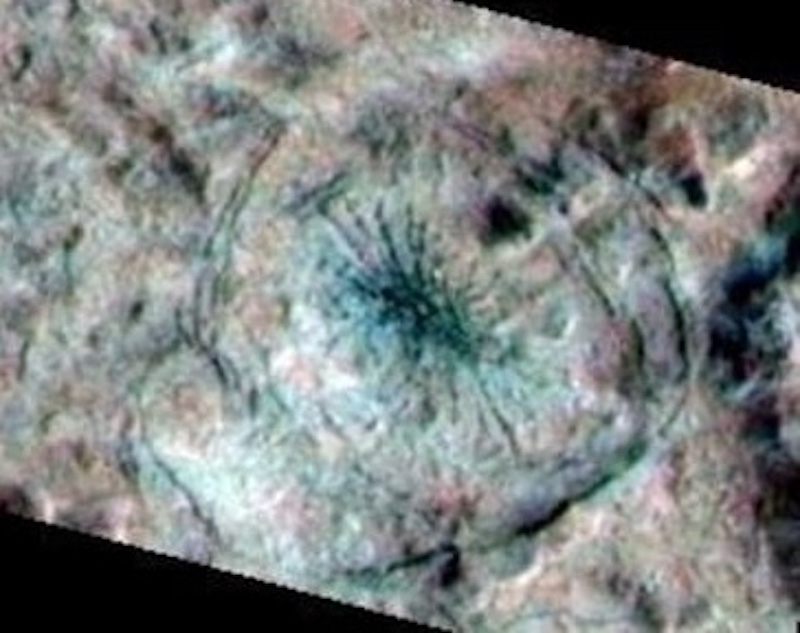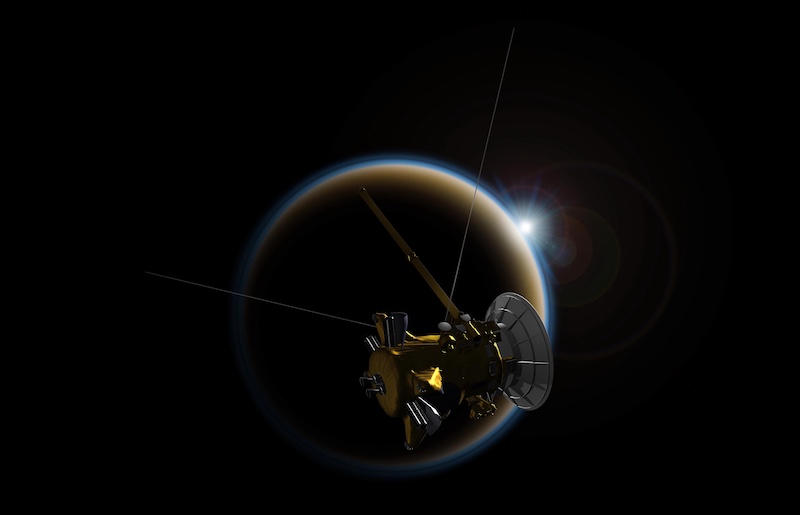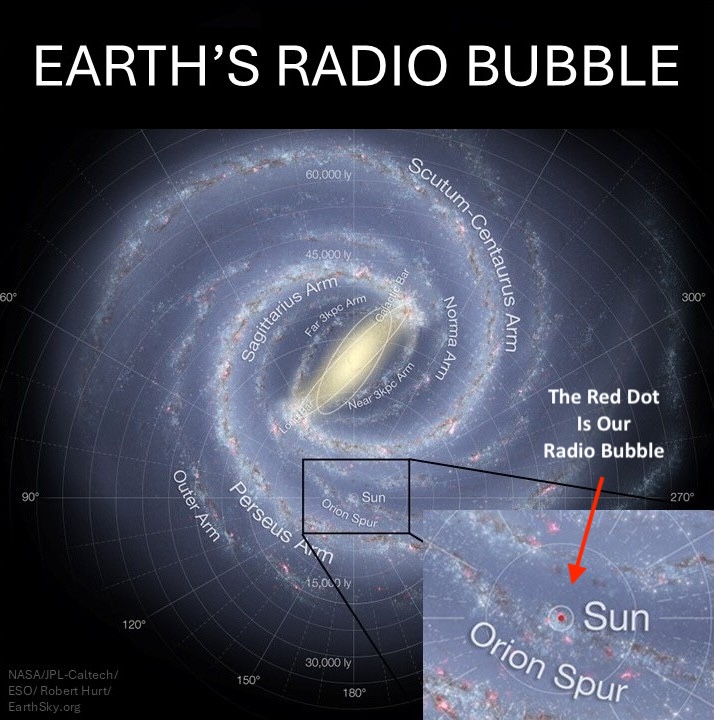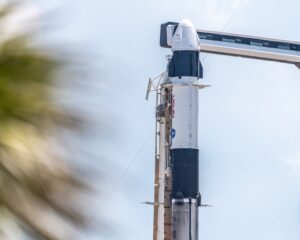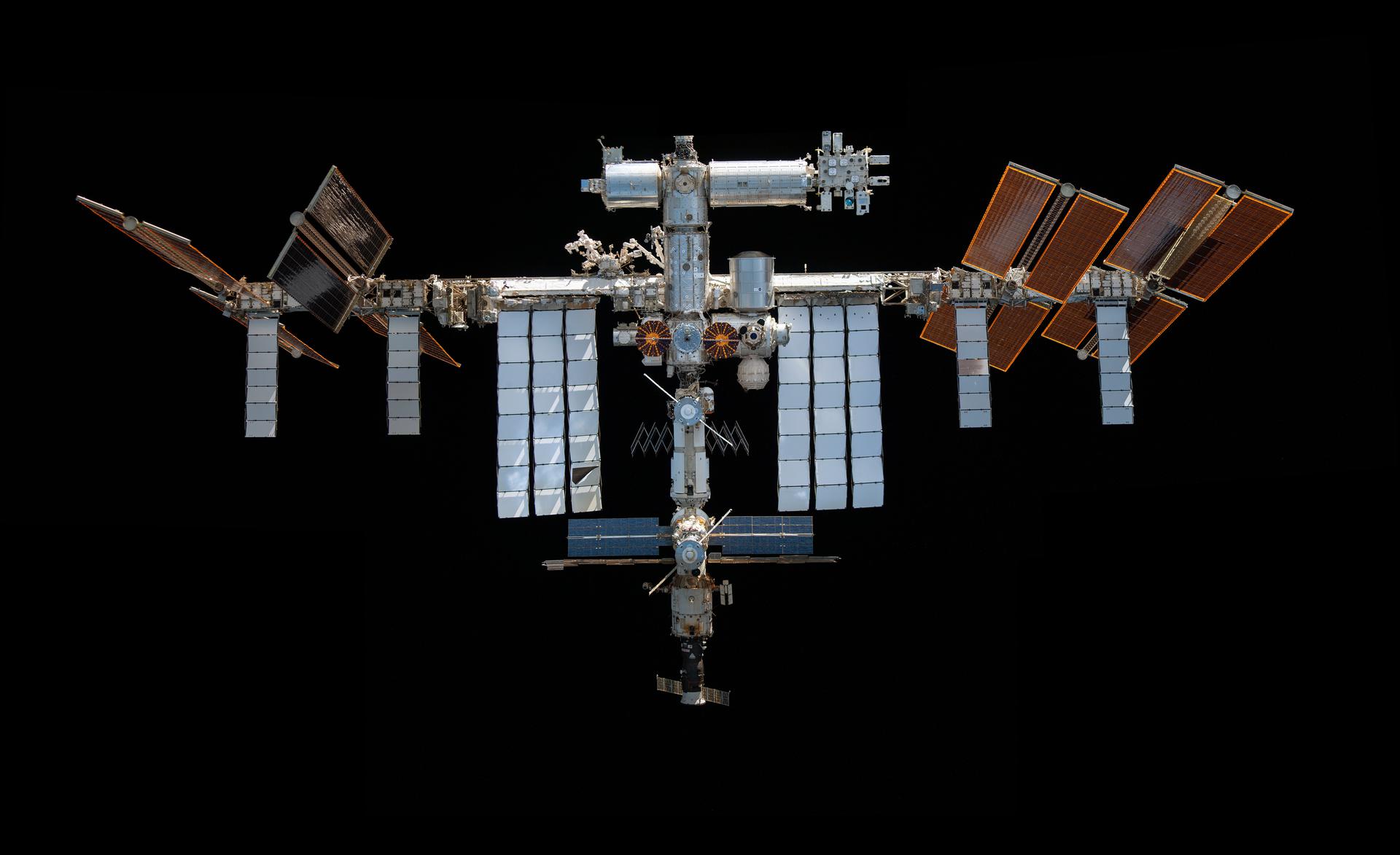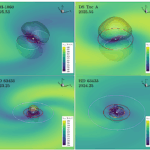Now Reading: New 5th planet found in system of remarkably diverse worlds
-
01
New 5th planet found in system of remarkably diverse worlds
New 5th planet found in system of remarkably diverse worlds
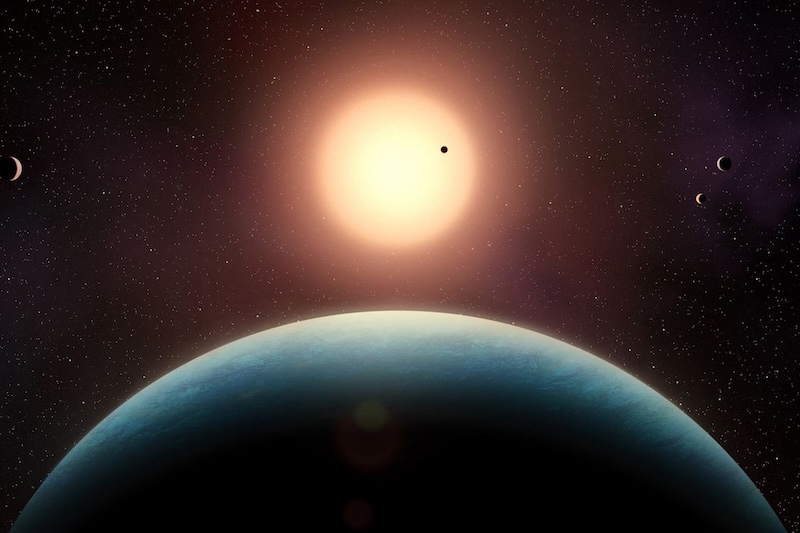
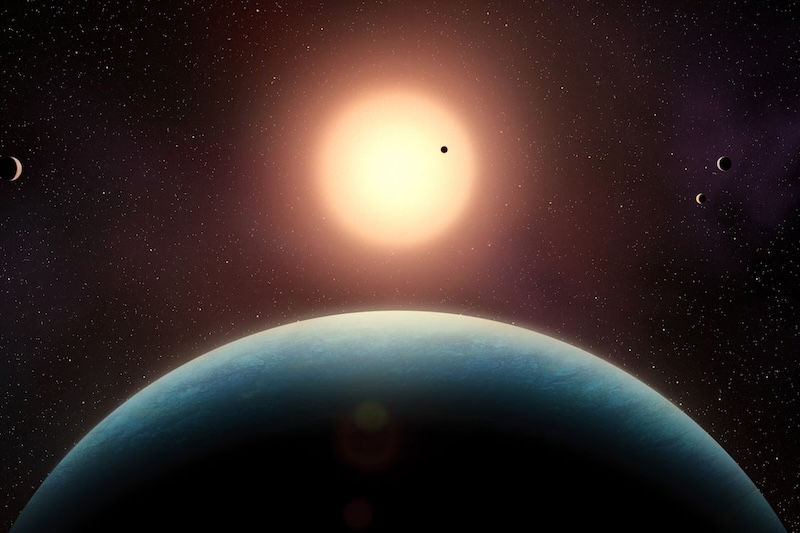
- L 98-59 is a red dwarf star with several small planets orbiting it. It is only 35 light-years from Earth. Previously, astronomers knew of four planets in the system.
- Now, astronomers have discovered a fifth planet, in the habitable zone of the star. They found it by re-analyzing older data from both ground and space-based telescopes.
- The planets of L 98-59 are remarkably diverse. The two closest to the star might be highly volcanic, like Jupiter’s moon Io. Meanwhile, the third and least dense planet might be a water world.
A 5th planet for L 98-59
L 98-59 is a fascinating planetary system only 35 light-years from Earth. Astronomers previously found four small exoplanets orbiting the red dwarf star. And now a research team led by the Trottier Institute for Research on Exoplanets (IREx) at the University of Montreal in Canada has confirmed a fifth planet. The researchers said on July 22, 2025, that the planet – L 98-59 f – is orbiting in the star’s habitable zone, where water could potentially exist. In addition, the research team has determined the sizes and masses of all the planets with unprecedented precision.
They used an archive of data from NASA’s TESS space telescope, the European Southern Observatory’s HARPS and ESPRESSO spectrographs in Chile, and NASA’s James Webb Space Telescope (JWST).
Previously, NASA’s TESS space telescope discovered the first three planets in 2019, and the fourth planet was found in 2021. This is now the fifth known planet orbiting L 98-59.
The researchers have submitted their new peer-reviewed paper to The Astronomical Journal. Meanwhile, a preprint version is currently available on arXiv, submitted on July 12, 2025.
5th planet is in the habitable zone
The astronomers found the fifth planet – called L 98-59 f – using the radial velocity method. Basically, it’s when the gravity of a planet slightly tugs on its host star as it orbits. Consequently, astronomers can then detect those very slight variations in the motion of the star. The team used data from the HARPS (High Accuracy Radial velocity Planet Searcher) spectrograph on the ESO 3.6-meter telescope and the ESPRESSO spectrograph at the Very Large Telescope (VLT), both in Chile.
Although this planet, like the others, orbits close to its star, it is within the star’s habitable zone. This is the region where temperatures could allow liquid water. This is possible because the star is smaller and cooler than our sun. Its habitable zone, therefore, is closer to the star than our sun’s habitable zone. In fact, L 98-59 f receives about the same amount of stellar energy as Earth does from the sun. Lead author Charles Cadieux at the University of Montreal said:
Finding a temperate planet in such a compact system makes this discovery particularly exciting. It highlights the remarkable diversity of exoplanetary systems and strengthens the case for studying potentially habitable worlds around low-mass stars.
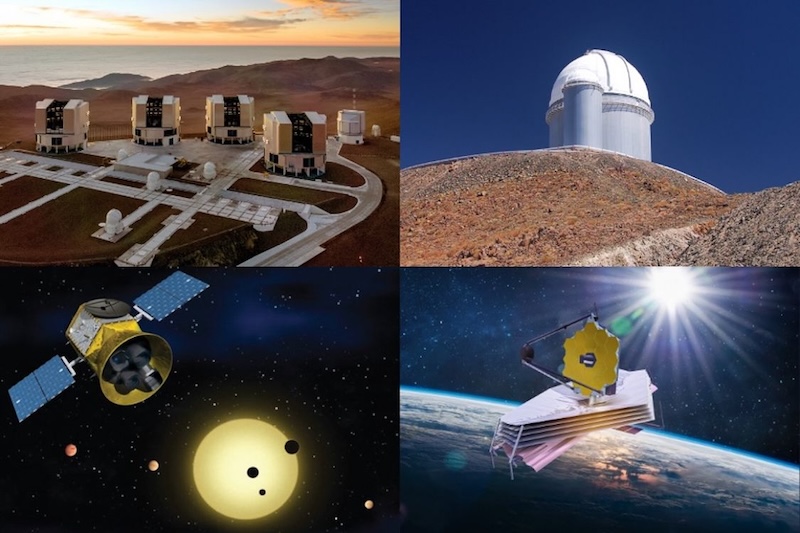
A diverse system of rocky worlds
The new discovery adds to the intrigue of this planetary system. Indeed, astronomers already knew the first four planets were a diverse and fascinating collection of worlds. Now, the new observations have helped the researchers determine their sizes and masses with even greater accuracy. Cadieux said:
These new results paint the most complete picture we’ve ever had of the fascinating L 98-59 system. It’s a powerful demonstration of what we can achieve by combining data from space telescopes and high-precision instruments on Earth, and it gives us key targets for future atmospheric studies with the James Webb Space Telescope.
At least four of the planets are rocky, like Earth. Scientists call those terrestrial planets. The third planet from the star, L 98-59 d, has a lower density than the others, however. It might be a water world, a rocky planet completely covered in water, or even a planet composed mostly of water without a solid surface. Previously, another study in 2024 suggested it might be a volcanic world with a sulfur-rich atmosphere.
In addition, the two closest planets to the star might experience significant volcanic activity, due to tidal heating from the star. This is similar to how Jupiter’s gravity heats the interior of its moon Io. Io is the most volcanically active body in our solar system. The closest planet to the star, L 98-59 b, is 84% the size of Earth and only half of Earth’s mass.
A unique natural laboratory
Co-author René Doyon, the director of the Trottier Institute for Research on Exoplanets at the University of Montreal, added:
With its diversity of rocky worlds and range of planetary compositions, L 98-59 offers a unique laboratory to address some of the field’s most pressing questions: What are super-Earths and sub-Neptunes made of? Do planets form differently around small stars? Can rocky planets around red dwarfs retain atmospheres over time?
Confirmation Of A Non-transiting Planet In The Habitable Zone Of The Nearby M dwarf L 98-59astrobiology.com/2025/07/conf… #astrobiology #exoplanet
— Astrobiology (@astrobiology.bsky.social) 2025-07-11T15:57:49.542Z
Improving old data
Notably, the researchers didn’t find the new planet by conducting new observations of L 98-59. Instead, they searched in older data from NASA’s TESS space telescope, NASA’s James Webb Space Telescope and the HARPS spectrograph on the ESO 3.6-meter telescope and ESPRESSO spectrograph on the Very Large Telescope (VLT), both in Chile. They used an improved version of the radial velocity technique called line-by-line (LBL). IREx researchers first developed the improved technique back in 2022.
The team combined LBL with an improved technique to measure a star’s temperature. This allowed them to remove excess stellar “noise” from the star to reveal the planet.
Also, the new analysis of the data doubled the precision of the measurements of the sizes and masses of all the planets.
Co-author Étienne Artigau at the University of Montreal said:
We developed these techniques to unlock this kind of hidden potential in archival data. It also highlights how improving analysis tools allow us to improve upon previous discoveries with data that are just waiting to be revisited.

An exciting planetary system
The researchers have also now started additional observations of L 98-59 with the Webb space telescope. And truly, it is a fascinating planetary system of great interest to astronomers. Co-author Alexandrine L’Heureux at the University of Montreal said:
With these new results, L 98-59 joins the select group of nearby, compact planetary systems that we hope to understand in greater detail over the coming years. It’s exciting to see it stand alongside systems like TRAPPIST-1 in our quest to unlock the nature and formation of small planets orbiting red dwarf stars.
Bottom line: Astronomers have discovered a fifth planet in the L 98-59 planetary system, in the star’s habitable zone. The system features a diverse range of worlds.
Read more: Is this a volcanic exoplanet? Hints are in its atmosphere
Read more: An inner solar system much like ours, 35 light-years away
The post New 5th planet found in system of remarkably diverse worlds first appeared on EarthSky.
Stay Informed With the Latest & Most Important News
Previous Post
Next Post
-
 01From Polymerization-Enabled Folding and Assembly to Chemical Evolution: Key Processes for Emergence of Functional Polymers in the Origin of Life
01From Polymerization-Enabled Folding and Assembly to Chemical Evolution: Key Processes for Emergence of Functional Polymers in the Origin of Life -
 02Panasonic Leica Summilux DG 15mm f/1.7 ASPH review
02Panasonic Leica Summilux DG 15mm f/1.7 ASPH review -
 03Two Black Holes Observed Circling Each Other for the First Time
03Two Black Holes Observed Circling Each Other for the First Time -
 04How New NASA, India Earth Satellite NISAR Will See Earth
04How New NASA, India Earth Satellite NISAR Will See Earth -
 05And Thus Begins A New Year For Life On Earth
05And Thus Begins A New Year For Life On Earth -
 06Astronomy Activation Ambassadors: A New Era
06Astronomy Activation Ambassadors: A New Era -
07SpaceX launch surge helps set new global launch record in 2024












